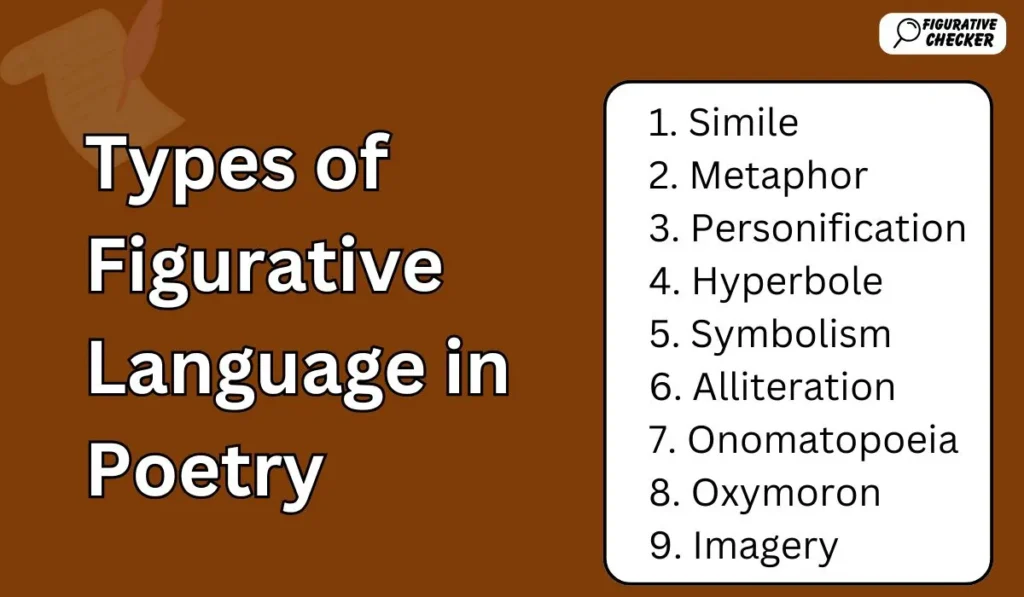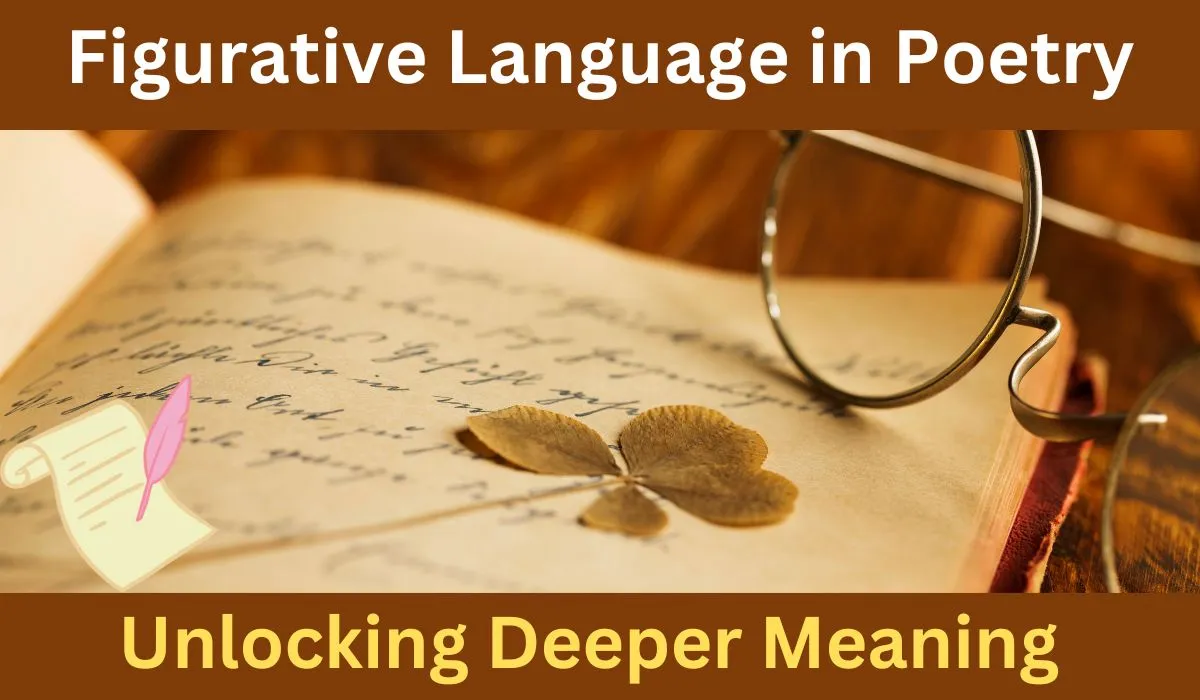Poetry has long been cherished for its ability to evoke emotion, convey profound ideas, and create vivid imagery. One of the most powerful tools that poets use to achieve this is figurative language. Through the artful use of similes, metaphors, personification, and other literary devices, poets can transform simple words into captivating expressions that resonate deeply with readers.
In this comprehensive article, we will explore the various types of figurative language used in poetry, their significance, and examples that demonstrate their effectiveness. By understanding these elements, readers can gain a deeper appreciation for the richness and complexity of poetic works.
What is Figurative Language?
Figurative language refers to the use of words and expressions that go beyond their literal meaning to create imaginative and thought-provoking descriptions. In poetry, figurative language allows poets to paint pictures with words, express emotions, and communicate abstract ideas in compelling ways.
Importance of Figurative Language in Poetry
- Enhances Imagery: Figurative language creates vivid mental images that help readers visualize scenes and emotions.
- Conveys Complex Ideas: Poets often use figurative language to express abstract concepts that are difficult to describe literally.
- Elicits Emotional Responses: By tapping into readers’ senses and emotions, figurative language makes poetry more impactful.
- Adds Depth and Layers: Figurative expressions invite readers to explore multiple meanings and interpretations.

Types of Figurative Language in Poetry
Let’s delve into some of the most common types of figurative language found in poetry.
1. Simile
A simile is a comparison between two different things using the words “like” or “as.”
Example:
“My love is like a red, red rose” – Robert Burns
In this famous line, Burns compares love to a red rose, symbolizing beauty and passion.
Why Similes Matter
Similes make abstract ideas more relatable and tangible by linking them to familiar images.
2. Metaphor
A metaphor directly compares two unrelated things without using “like” or “as.”
Example:
“All the world’s a stage, and all the men and women merely players.” – William Shakespeare
Here, Shakespeare equates life to a stage, emphasizing the performative aspects of human existence.
Why Metaphors Matter
Metaphors encourage readers to think deeply and uncover hidden connections between seemingly unrelated concepts.
3. Personification
Personification involves giving human characteristics to non-human objects or abstract ideas.
Example:
“Because I could not stop for Death—He kindly stopped for me.” – Emily Dickinson
Dickinson personifies death as a courteous gentleman, making the concept more relatable and less frightening.
Why Personification Matters
Personification adds life and personality to inanimate objects and abstract ideas, making them more engaging.
4. Hyperbole
Hyperbole is an intentional exaggeration for emphasis or dramatic effect.
Example:
“I had to wait an eternity.” – Anonymous
This exaggeration highlights the frustration of waiting.
Why Hyperbole Matters
Hyperbole captures intense emotions and emphasizes the significance of an event or feeling.
5. Symbolism
Symbolism involves using symbols to represent ideas or concepts beyond their literal meaning.
Example:
“Do not go gentle into that good night; Old age should burn and rave at close of day.” – Dylan Thomas
The “night” symbolizes death, while “day” represents life.
Why Symbolism Matters
Symbols add layers of meaning to poetry, allowing readers to interpret the text on multiple levels.
6. Alliteration
Alliteration is the repetition of consonant sounds at the beginning of words.
Example:
“She sells seashells by the seashore.”
Why Alliteration Matters
Alliteration creates a musical quality that enhances the rhythm and mood of a poem.
7. Onomatopoeia
Onomatopoeia refers to words that mimic the sounds they describe.
Example:
“The buzz of the bees filled the meadow.”
Why Onomatopoeia Matters
Onomatopoeia adds a sensory dimension to poetry, making it more immersive.
8. Oxymoron
An oxymoron combines two contradictory terms.
Example:
“Sweet sorrow” – William Shakespeare
Why Oxymorons Matter
Oxymorons capture complex emotions and paradoxes, adding depth to poetic expressions.
9. Imagery
Imagery involves the use of descriptive language that appeals to the senses.
Example:
“A host, of golden daffodils; Beside the lake, beneath the trees, Fluttering and dancing in the breeze.” – William Wordsworth
Why Imagery Matters
Imagery immerses readers in the sensory experiences of the poem, making it more vivid and memorable.
How Figurative Language Transforms Poetry
1. Creates Emotional Resonance
Figurative language helps poets connect with readers on an emotional level by expressing feelings that transcend literal words.
2. Enhances Aesthetic Appeal
The beauty of figurative language lies in its ability to craft memorable and pleasing expressions.
3. Encourages Interpretation
Poems rich in figurative language invite readers to explore different meanings and interpretations.
4. Builds Symbolic Depth
Symbolism and metaphors add layers of meaning that can be revisited and reinterpreted over time.
Famous Poems and Their Use of Figurative Language
1. “The Road Not Taken” by Robert Frost
This poem uses metaphor and symbolism to explore the theme of choices and their consequences.
2. “Sonnet 18” by William Shakespeare
Through similes and metaphors, Shakespeare immortalizes his beloved’s beauty.
3. “Ode to a Nightingale” by John Keats
Keats uses imagery and personification to capture the fleeting beauty of life and nature.
Tips for Analyzing Figurative Language in Poetry
- Identify Literary Devices: Look for similes, metaphors, and other forms of figurative language.
- Understand the Context: Consider the poem’s theme and the poet’s intention.
- Explore Multiple Interpretations: Figurative language often has layered meanings.
- Pay Attention to Emotional Impact: Note how the language makes you feel.
- Consider the Sound: Alliteration, onomatopoeia, and rhythm contribute to the poem’s effect.
Figurative language in poetry PDF
Figurative Language In Poetry Worksheets
Figurative language enriches poetry by conveying complex ideas and emotions through vivid imagery and comparisons. Common types include metaphors, similes, personification, hyperbole, and idioms. To enhance understanding and teaching of these concepts, several resources offer worksheets and activities:
Ereading Worksheets: This site provides free worksheets featuring poems rich in figurative language. Each worksheet includes comprehension questions to assess understanding.
Teachers Pay Teachers: This platform offers a variety of figurative language worksheets and task cards, including assessments and practice exercises.
Writing Forward: This article discusses how figurative language enhances poetry, offering examples and insights into its use.
Incorporating these resources into your study or teaching of poetry can deepen appreciation for the role of figurative language in creating meaning and evoking emotion.
Conclusion
Figurative language is the heart and soul of poetry, transforming simple words into profound expressions that captivate readers. By understanding and appreciating the various forms of figurative language, readers can unlock the deeper meanings hidden within poetic works and experience the full beauty of this timeless art form.
FAQs
What is Figurative Language?
Figurative language uses words or expressions that go beyond their literal meaning to create vivid imagery or convey complex meanings. It often appeals to the senses and helps readers or listeners visualize ideas in a more creative way. Examples include similes, metaphors, hyperbole, and personification.
What is Figurative Language in Poetry?
In poetry, figurative language plays a crucial role in enhancing the meaning and emotional impact of a poem. Poets use figurative language to create vivid imagery, evoke emotions, and express abstract ideas in unique and memorable ways. Common forms in poetry include metaphors, similes, personification, symbolism, and hyperbole. This artistic use of language allows readers to experience the poem in a deeper, imaginative way.
What is the figurative language in poems?
Ans: Figurative language is used in poems to create vivid imagery, express ideas more creatively, and convey emotions through non-literal meanings. It helps deepen the emotional resonance of the poem, making it more engaging and impactful for the reader.
